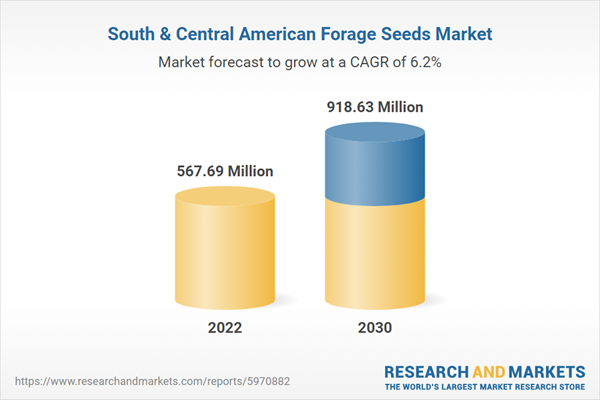Technological Improvement for Seed Genetics fuel the South & Central America Forage Seeds Market
The seed manufacturers have developed different varieties or traits of seeds, such as hybrid, GMO, non-GMO, and organic seeds, with technological developments. The farmers preference for these transgenic varieties is slowly rising in various forage-growing regions to minimize crop losses by weeds and diseases and enhance the quality of seeds. The hybrid seeds are developed by the special, carefully controlled cross-pollination of two different parent plants of the same species to produce new traits that cannot be created by the inbreeding of two of the same plants. Usually, the hybrid seeds are cross-pollinated by hand. GMO seeds are produced by genetic engineering, altering the genetic material of an organism. GMO seeds are grown in the laboratory using modern biotechnology techniques. On the other hand, non-GMO seeds are grown by pollination. Organic seeds are considered as non-GMO seeds. Organic seeds are produced naturally without the aid of pesticides, fertilizers, or any other chemical substance. These seeds are disease-resilient and have enhanced capabilities to thrive in adverse conditions. These breeding techniques allow the development of new seed varieties with desired traits by modifying the DNA of the seeds and plant cells. These technological improvements are helping address the challenges farmers face during the cultivation of forage seeds. Thus, the constant technological improvements are expected to create lucrative opportunities in the South & Central America forage seeds market in the coming years.South & Central America Forage Seeds Market Overview
The forage seeds market in South & Central America is segmented into Brazil, Argentina, and the Rest of South & Central America. Brazil is one of the worlds largest markets for animal feed, as the country has a flourishing livestock industry. As per the report of Alltech Global, in 2020, the region produced over 100 million metric tons of animal feed. Also, Brazil ranks third in the world with one-third of global animal feed production. Thus, high animal feed production boosts the demand for forage seeds. Moreover, South & Central America is one of the largest exporters of meat and dairy products globally, and the rising demand for quality meat worldwide is pushing livestock farmers in the region to adopt animal feed, thereby boosting the demand for forage seeds.South & Central America Forage Seeds Market Segmentation
The South & Central America forage seeds market is segmented based on type, category, livestock, and country. Based on type, the South & Central America forage seeds market is segmented into alfalfa, clover, ryegrass, timothy, sorghum, brome, birdsfoot trefoil, cowpea, meadow fescue, and others. The alfalfa segment held the largest market share in 2022. The clover segment is further subsegmented into white, red, hybrid, and others. Additionally, the ryegrass segment is categorized into annual ryegrass, perennial ryegrass, Italian ryegrass, and hybrid ryegrass.Based on category, the South & Central America forage seeds market is bifurcated into organic and conventional. The conventional segment held a larger market share in 2022.
Based on livestock, the South & Central America forage seeds market is segmented into ruminants, poultry, swine, and others. The ruminants segment held the largest market share in 2022.
Based on country, the South & Central America forage seeds market is segmented into Brazil, Argentina, and the Rest of South & Central America. The Rest of South & Central America dominated the South & Central America forage seeds market share in 2022.
UPL Ltd, DLF Seeds AS, Corteva Inc, S&W Seed Co, MAS Seeds SA, and Syngenta AG are some of the leading companies operating in the South & Central America forage seeds market.
Table of Contents
Companies Mentioned
- Corteva Inc
- DLF Seeds AS
- MAS Seeds SA
- S&W Seed Co
- Syngenta AG
- UPL Ltd
Table Information
| Report Attribute | Details |
|---|---|
| No. of Pages | 90 |
| Published | March 2024 |
| Forecast Period | 2022 - 2030 |
| Estimated Market Value in 2022 | 567.69 Million |
| Forecasted Market Value by 2030 | 918.63 Million |
| Compound Annual Growth Rate | 6.2% |
| No. of Companies Mentioned | 6 |









